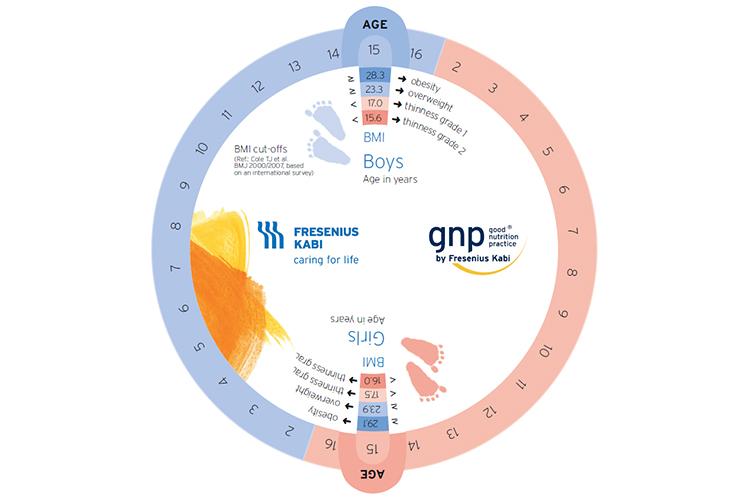References:
1. Bryce J, Boschi-Pinto C, Shibuya K, Black RE. WHO estimates of the causes of death in children. Lancet 2005; 365(9465):1147-1152.
2. ONS to tackle malnutrition. A summary of evidence base. Medical Nutrition International Industry (MNI), 2012.
3. Joosten KF, Zwart H, Hop WC, Hulst JM. National malnutrition screening days in hospitalised children in the Netherlands. Arch Dis Child 2010; 95(2):141-145.
4. Sermet-Gaudelus I, Poisson-Salomon AS, Colomb V, Brusset MC, Mosser F, Berrier F et al. Simple pediatric nutritional risk score to identify children at risk of malnutrition. Am J Clin Nutr 2000; 72(1):64-70.
5. Kar BR, Rao SL, Chandramouli BA. Cognitive development in children with chronic protein energy malnutrition. Behav Brain Funct 2008; 4:31.
6. Corbett SS, Drewett RF. To what extent is failure to thrive in infancy associated with poorer cognitive development? A review and metaanalysis. J Child Psychol Psychiatr 2004; 45(3):641-654.
7. Black MM, Dubowitz H, Krishnakumar A, Starr RH, Jr. Early intervention and recovery among children with failure to thrive: follow-up at age 8. Pediatrics 2007; 120(1):59-69.
8. roleau V, Babakissa C. Prevalence, impact and management of malnutrition in pediatrics unit. WCPGHAN 3 - World Congress of Pediatric Gastroenterology and Hepatology and Nutrition 2008: 1009. Ref Type: Abstract
9. Emond AM, Blair PS, Emmett PM, Drewett RF. Weight faltering in infancy and IQ levels at 8 years in the Avon Longitudinal Study of Parents and Children. Pediatrics 2007; 120(4):e1051-e1058.
10. Pernicka E, Wilson L, Bauer P, Schindler K, Hiesmayer M. Malnutrition assessed by BMI and weight loss causes increased length of hospital stay. Results of the NutritionDay study, Clin Nutr Suppl 2010; 5(2):168.
11. de Souza MF, Leite HP, Koch Nogueira PC. Malnutrition as an independent predictor of clinical outcome in critically ill children. Nutrition 2012; 28(3):267-270.
12. Hulst JM, Zwart H, Hop WC, Joosten KF. Dutch national survey to test the STRONGkids nutritional risk screening tool in hospitalized children. Clin Nutr 2010; 29(1):106-111.
13. Fernandez M, Ferraro AA, Antheo de Azevedo R, Neto UF. Evaluation and follow up of the nutritional status of children hospitalized in a general paediatric unit on the outskirts of the city of Sao Paulo. WCPGHAN 3 - World Congress of Pediatric Gastroenterology and Hepatology and Nutrition 2008: 850. Ref Type: Abstract.
14. Stratton RJ, Green CJ, Elia M. Disease-related malnutrition: an evidence based approach to treatment. Wallingford: CABI Publishing; 2003.
15. Agostoni C, Axelson I, Colomb V, Goulet O, Koletzko B, Michaelsen KF et al. The need for nutrition support teams in pediatric units: a commentary by the ESPGHAN committee on nutrition. J Pediatr Gastroenterol Nutr 2005;41(1):8-11.
16. Sala A, Rossi E, Antillon F, Molina AL, de Maseli T, Bonilla M et al. Nutritional status at diagnosis is related to clinical outcomes in children and adolescents with cancer: a perspective from Central America. Eur J Cancer 2012; 48(2):243-252.
17. Secker DJ, Jeejeebhoy KN. Subjective Global Nutritional Assessment for children. Am J Clin Nutr 2007; 85(4):1083-1089.
18. ESPGHAN Committee on Nutrition: JPGN 2010; 51 : 110-22.
19. Calder PC: Clin Nutr 2010; 29: 5-12.
20. Lochs H, Allison SP, Meier R, Pirlich M, Kondrup J, Schneider S, et al. Introductory to the ESPEN Guidelines on Enteral Nutrition: terminology, defi nitions and general topics. Clin Nutr 2006;25:180-6. 2







